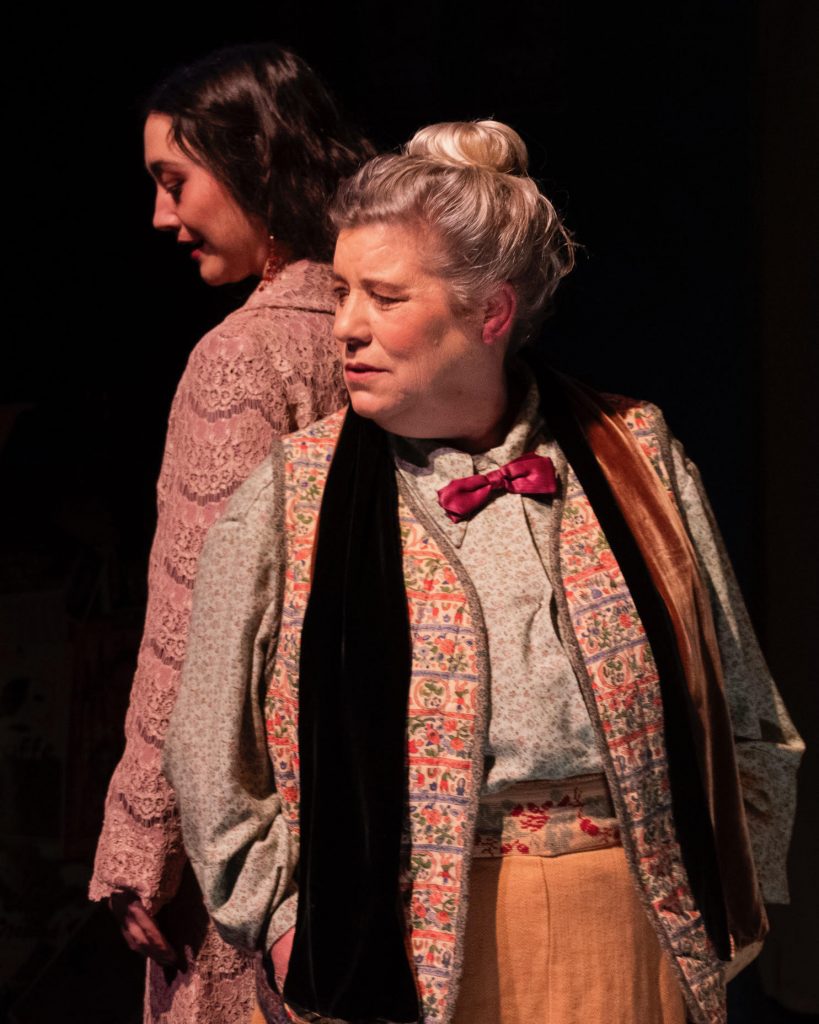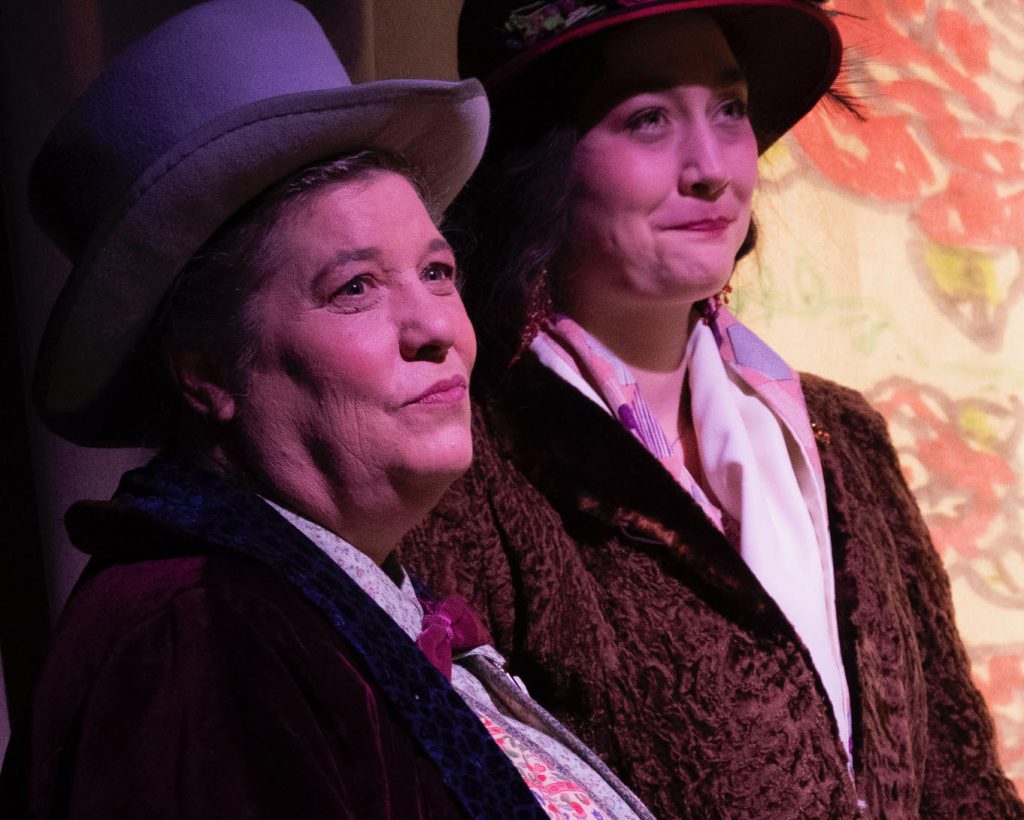
Credit: Nancy Caldwell
Jericho Arts Centre to February 11, 2024
Tickets: $15 (student with ID)-$34 from www.unitedplayers.com
Posted January 23, 2024
Gertrude Stein is Gertrude Stein is Gertrude Stein. And when actor Tanja Dixon-Warren (as Gertrude) breaks down the fourth wall and asks us why we came to see this show, I’m betting it’s curiosity not about what Stein wrote but about the person, the famous/infamous Gertrude Stein (1874-1946): who she was, what is her legacy, was she the “genius” she claimed – ad nauseam – to be. Polling the audience, Dixon-Warren (as Gertrude) asks how many have read any of her books, and at the sold-out matinee I attended, only one hand was raised. I read maybe fifty pages years ago and the book – I’ve even forgotten which of them – has never been picked up again.

Credit: Nancy Caldwell
Janet Malcolm wrote in the June 5, 2005 edition of The New Yorker, “ I think it is safe to say that most well-read people in the English-speaking world have not read “The Making of Americans” [Stein’s best known work apart from the memoir of Alice B. Toklas].” Malcolm goes on to say, “It is more a monument than a text, a heroic achievement of writing, a near-impossible feat of reading.” And that’s the thing: Stein is almost impossible to read.
However, Gertrude and Alice, written by Anna Chatterton, Evalyn Parry and Karin Randoja – a trio of Canadian writers/theatre-makers, is delightful from beginning to end. Under Lois Anderson’s direction, Dixon-Warren and Kelsi James, as Alice, bring life and love, humour and energy to the characters. Yes, it’s tedious hearing Gertrude tell us she’s a genius and generally promoting herself but that is the miracle of Dixon-Warren’s portrayal: we’re okay with it. Dixon-Warren, mannishly costumed by Sheila White, in a floor length skirt, baggy blouse, vest, a bow tie and a top hat, is so warm and expansive in the role, we happily forgive Gertrude her arrogance.
And James, as Alice B. Toklas (1877-1967), Gertrude’s life partner for almost forty years, makes a pretty, slightly sly, slightly flirtatious, always adoring disciple of Gertrude. Costume designer White puts Alice in an elegant rose-coloured lace suit. In one hilarious scene, Gertrude and Alice – food lovers both – go into raptures over butter; Alice ends up coming to a breathless, erotic climax on the settee. Not a kiss, not a caress has been exchanged. Rubbing noses, which they indulge in, make Alice and Gertrude more like a pair of puppies than the outrageous lesbian lovers literary history makes them out to be.

Credit: Nancy Caldwell
Curious is Anderson’s decision to cast Dixon-Warren and James whose age disparity is, perhaps, more than a decade, when in fact Gertrude was only older by about three years. I think it changes the dynamic between them but I was so charmed by the script and the production, I really didn’t care.
Doing a dive into the documented facts of Stein’s life, however, I went down a rabbit hole. There is so much written about Stein and not all of it good, especially her wartime politics which appear to support the Nazi collaborators despite the fact that both she and Alice were Jewish. And although some have celebrated her as an early feminist, in her famous ‘salons’ held every Saturday in her apartment at 27 rue de Fleurus, Alice and the wives of the artists and writers were shuffled off into a separate room while Stein held forth, the only woman, amidst the likes of Hemingway, Matisse and Picasso. She did not believe women could be geniuses – herself excluded, of course.

Credit: Nancy Caldwell
The play, however, goes nowhere near these ambiguities; that play remains to be written.
In my background reading I experienced a major insight; from Wikipedia comes this: “These stream-of-consciousness experiments, rhythmical essays or portraits, were designed to evoke the excitingness of pure being and can be seen as literature’s answer to visual art styles and forms such as Cubism, plasticity and collage.” That was an “aha” moment for me. Stein was an artist whose medium wasn’t paint or clay, it was words. And she was as much a composer of music as she was a writer; she used words not notes.
Stein’s poem at the end of the slightly more than one hour performance brought that concept home so purely, so beautifully with the repetition of “Paris and spring and flowers and spring and Paris” against the projected video backdrop of colourful, cartoon-like blossoms rising and rising. The three-hundred-and-sixty-degree-edness of the words and images suddenly illustrated, for me, Stein’s monumental achievement. Possible genius.

